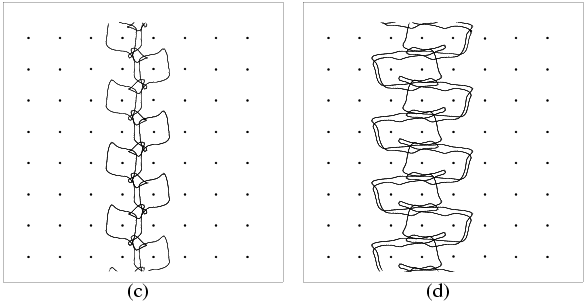
When an overdamped particle is driven with an increasing DC drive it is intuitive that it will move in the direction of drive and that the velocity will increase linearly. If there is an underlying substrate such as from a periodic modulation, then at zero temperature there will be a finite DC threshold force below which the particle will be pinned and above which the particle will move. Just above the depinning threshold the particle velocities can be nonlinear, exhibiting a power law scaling analogous to second-order phase transitions. Alternatively the velocity may jump discontinuously in analogy to equilibrium first order phase transitions. If the substrate has some asymmetry then it is possible that for a certain range of increasing DC drives the particle velocity can decrease, an effect termed "negative differential resistance." For symmetric substrates this phenomena can still occur for systems with collections of interacting particles. In 1D it is also possible for a particle interacting with an asymmetric potential to exhibit a net DC velocity in the absence of any external DC drive under an applied AC drive or periodic flashing of the potential. This phenomenon is often called a ratchet effect and can be stochastic or deterministic. The ratchet effect is relevant in various contexts such as biological motors, as well as novel technological devices such as flux manipulation in superconductors or colloidal or granular transport. The ratchets can exist in both classical and quantum systems. In our work we have proposed new types of ratchets and rectification effects for systems in 2D as opposed to 1D. In 2D we find that a remarkably rich variety of deterministic phase locking and rectification effects can occur without an underlying asymmetric substrate but with a symmetric substrate. In 2D there are numerous other ways to break the symmetry. In particular, we have considered cases where there are two crossed AC drives, producing a chirality to the motion of the particle which breaks the symmetry. Additionally, different phases of the AC drives can be used to create spatially asymmetric closed orbits. We also have found a new phenomena we term "absolute transverse mobility" in which the particle moves sideways to the direction of the applied drive. Finally, we have shown that it is possible to use a ratchet effect to produce novel types of flux-logic devices.